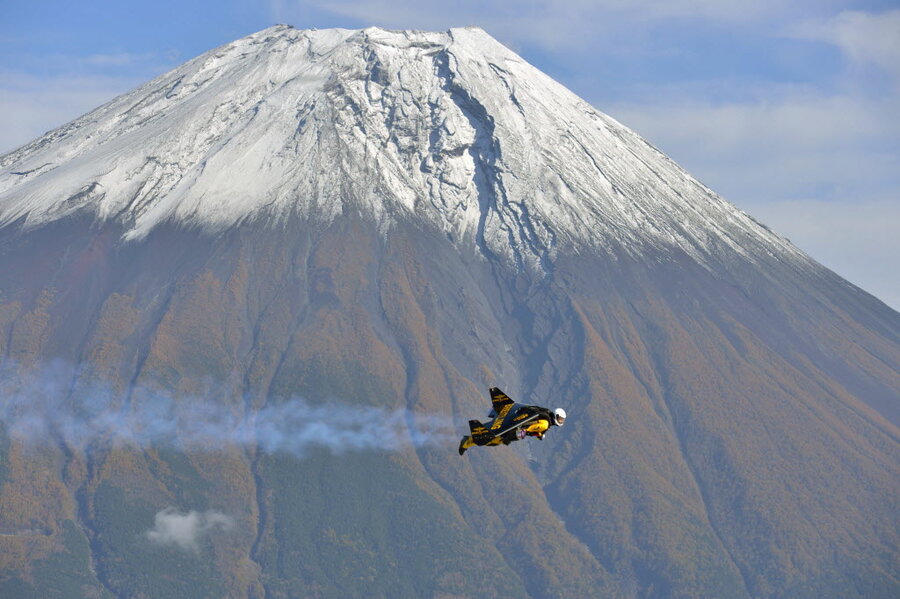'Jetman' tours Mt. Fuji with a jetpack
Loading...
In 1995, the character Buzz Lightyear, from “Toy Story,” buzzed under apparently rocket-boosted wings around a child’s bedroom. All the girl toys swooned. Woody, the ever-brooding cowboy, seethed.
And who wouldn’t be jealous? Buzz could fly – not just fly, but fly outside of the confines of a pressurized metal canister. He could fly like the birds fly.
It’s little wonder, then, that humans are equally fascinated with Yves Rossy, also known as “Jetman.” This month, the real-life Buzz made his latest series of eagle-like flights around Mt. Fuji, in a commemorative event for the mountain’s designation as a UNESCO world heritage site.
Mr. Rossy ringed the 12,389-foot mountain in nine flights made between Oct. 28 and Nov. 3, according to The Telegraph.
Rossy, a Swiss International Air Lines pilot and a former Swiss Air Force pilot, made his first jetpack flight 7,703 feet over the Swiss Alps in 2008. At the time, he called himself “Fusion Man.” Since then, he has flown over the Grand Canyon, the English Channel, and Rio de Janeiro, and along the way he adopted the somewhat more cinematic monicker, “Jetman.”
"Speed is not the great motivator," Rossy told Sports Illustrated, in 2012. "Living is. Feeling is. Experiencing is – and then sharing that experience with others. That's why I do this. That's the only reason why."
Rossy’s flying contraption, called the "Jetwing," flies after a decade of trial and error in the design phase: in 2003, his wings were inflatable; in 2004, they were made of carbon fiber; in 2005, he put two Jet-Cat P200 engines under those wings; in 2006, he added another two engines.
The 4-engine Jetwing weighs just 121 pounds and travels at an average speed of 125 miles per hour. It is unconstrained flight, as near as it is possible for a human to get, at least at the moment, to bird flight – except, of course, for the one inhibiting factor that Jetwing can neither take off nor land. At Mt. Fuji, Rossy jumped out of a helicopter and into flight, and then parachuted to a landing. He has said, though, that a new design in development will allow for landing – as well as for acrobatics.
Rossy, after all, is a performer. And, as with any daredevil, he has given his audiences some good, if unintended, scares. An attempted flight across the Strait of Gibraltar went awry in 2009 when strong winds sent him splashing into the Mediterranean. A helicopter team retrieved him from the water. Later, the Spanish coast guard fished out his aircraft.






